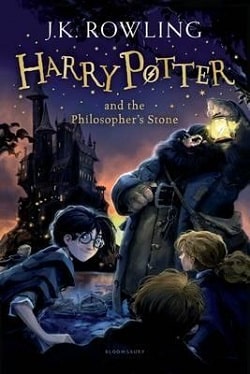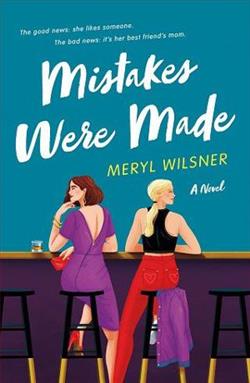That afternoon Sam Somerville took the regular flight from Heathrow to Washington, landing just after dark.
When Sam Somerville took off from Heathrow, Dr. Barnard was sitting in his laboratory at Fulham staring at a small collection of pieces of debris spread on a crisp white sheet of paper across a tabletop. He was very tired. Since the urgent call to his small London house just after dawn the previous day, he had not stopped working. Much of that work was a strain on the eyes, peering through magnifying glasses and into microscopes. But if he rubbed his eyes that late afternoon, it was more from surprise than exhaustion.
He now knew what had happened, how it had happened, and what had been the effect. Stains on fabric and leather had yielded to chemical analysis to reveal the exact chemical components of the explosive; the extent of burn- and impact-deterioration had shown him how much was used, where it had been placed, and how it had been triggered. There were some pieces missing, of course. Some would never appear, vaporized, lost forever, having ceased to exist. Others would emerge from the ruin of the body itself, and he had been in constant contact with Ian Macdonald, who was still at work in Oxford. The yield from Oxford would arrive shortly. But he knew what he was looking at, though to the untrained eye it was just a pile of minuscule fragments.
Some of them made up the remnants of a tiny battery, source identified. Others were tiny pieces of polyvinyl-chloride insulated plastic covering, source identified. Strands of copper wire, source identified. And a mess of twisted brass bonded with what had once been a small but efficient pulse-receiver. No detonator. He was 100 percent sure, but he wanted to be 200 percent. He might have to go back to the road and start again. One of his assistants poked his head around the door.
“Dr. Macdonald on the line from the Radcliffe.”
The pathologist had also been working since the previous afternoon, at a task many would find horribly gruesome but which to him was more full of detective fascination than any other he could imagine. He lived for his profession, so much so that instead of limiting himself to examining the remains of bomb-blast victims, he attended the courses and lectures available only to a very few on bomb-making and disarming offered at Fort Halstead. He wished to know not simply that he was looking for something, but what it was and what it looked like.
He had begun by studying the photographs for two hours before he even touched the cadaver itself. Then he carefully removed the clothes, not relying on an assistant but doing it himself. The running shoes came first, then the ankle socks. The rest was snipped off, using fine scissors. Each item was bagged and sent direct to Barnard in London. The yield from the clothes had reached Fulham by sunrise.
When the body was naked, it was X-rayed from top to toe. Macdonald studied the prints for an hour and identified forty nonhuman particles. Then he swabbed the body down with a sticky powder, which removed a dozen infinitely small particles stuck to the skin. Some were crumbs of grass and mud; some were not. A second police car took this grim harvest to Dr. Barnard in Fulham.
He did an external autopsy, dictating into a recorder in his measured Scottish lilt. He only began to cut just before dawn. The first task was to excise from the cadaver all the “relevant tissue.” This happened to be all of the middle section of the body, which had lost almost everything from and including the bottom two ribs down to the top of the pelvis. Within the excised matter were the small particles that remained of eight inches of lower spine, which had come straight through the body and the ventral wall to lodge in the front of the jeans.
The autopsy—establishment of cause of death—was no problem. It was massive explosive injury to spine and abdomen. The full post-mortem needed more. Dr. Macdonald had the excised matter X-rayed again, in much finer grain. There were things in there, all right, some so small they would defy tweezers. The excised flesh and bone was finally “digested” in a brew of enzymes to create a thick soup of dissolved human tissue, bone included. It was the centrifuge that yielded the last cull, a final ounce of bits of metal.
When this ounce was available for examination Dr. Macdonald selected the largest piece, the one he had spotted in the second X-ray, deeply impacted into a piece of bone and buried inside the young man’s spleen. He studied it for a while, whistled, and rang Fulham.
Barnard came on the line. “Ian, glad you called. Anything else for me?”
“Aye. There’s something here you have got to see. If I’m right, it’s something I’ve never seen before. I think I know what it is, but I can hardly believe it.”
“Use a squad car. Send it now,” said Barnard grimly.
Two hours later the men were speaking again. It was Barnard who called this time.
“If you were thinking what I believe you were thinking, you were right,” he said. Barnard had his 200 percent.
“It couldn’t come from anywhere else?” asked Macdonald.
“Nope. There’s no way one of these gets into anybody’s hands but the manufacturer’s.”
“Bloody hell,” said the pathologist quietly.
“Mum’s the word, matey,” said Barnard. “Ours but to do or die, right? I’m having my report with the Home Secretary in the morning. Can you do the same?”
Macdonald glanced at his watch. Thirty-six hours since he had been roused. Another twelve to go.
“Sleep no more. Barnard does murder sleep,” he parodied Macbeth. “All right, on his desk by breakfast.”
That evening he released the body, or both parts of it, to the coroner’s officer. In the morning the Oxford coroner would open and adjourn the inquest, enabling him to release the body to the next of kin, in this case Ambassador Fairweather in person, representing President John Cormack.
As the two British scientists wrote their reports through the night, Sam Somerville was received, at her own request, by the committee in the Situation Room beneath the West Wing. She had appealed right up to the Director of the Bureau, and after she had telephoned Vice President Odell, he had agreed to bring her along.
When she entered the room they were all already seated. Only David Weintraub was missing, away in Tokyo talking to his opposite number there. She felt intimidated; these men were the most powerful in the land, men you only saw on television or in the press. She took a deep breath, held her head up, and walked forward to the end of the table. Vice President Odell gestured to a chair.
“Sit down, young lady.”
“We understand you wanted to ask us to let Mr. Quinn go free,” said Attorney General Bill Walters. “May we ask why?”
Sam took a deep breath. “Gentlemen, I know some may suspect Mr. Quinn was in some way involved in the death of Simon Cormack. I ask you to believe me. I have been in close contact with him in that apartment for three weeks and I’m convinced he genuinely tried to secure that young man’s release safe and unharmed.”
“Then why did he run?” asked Philip Kelly. He did not appreciate having his junior agents brought to the committee to speak for themselves.
“Because there were two freak news leaks in the forty-eight hours before he went. Because he had spent three weeks trying to gain that animal’s trust and he had done it. Because he was convinced Zack was about to scuttle and run, if he couldn’t get to him alone and unarmed, without a shadow from either the British or American authorities.”















